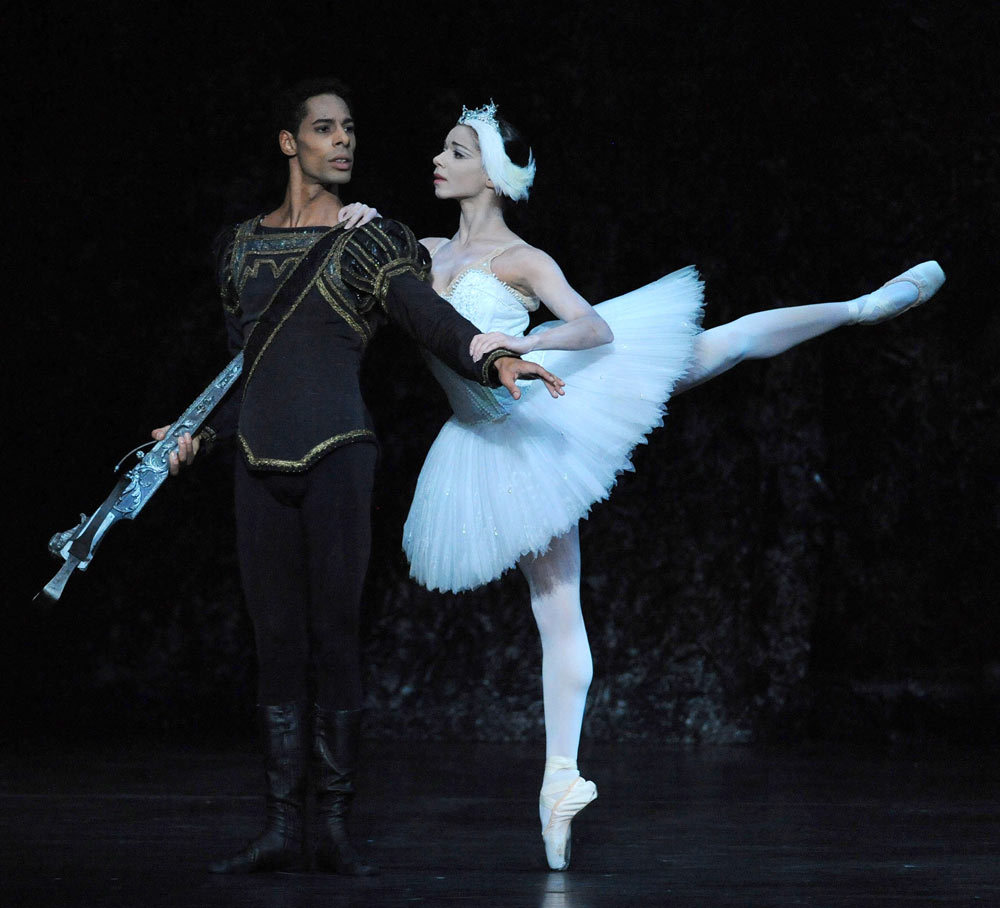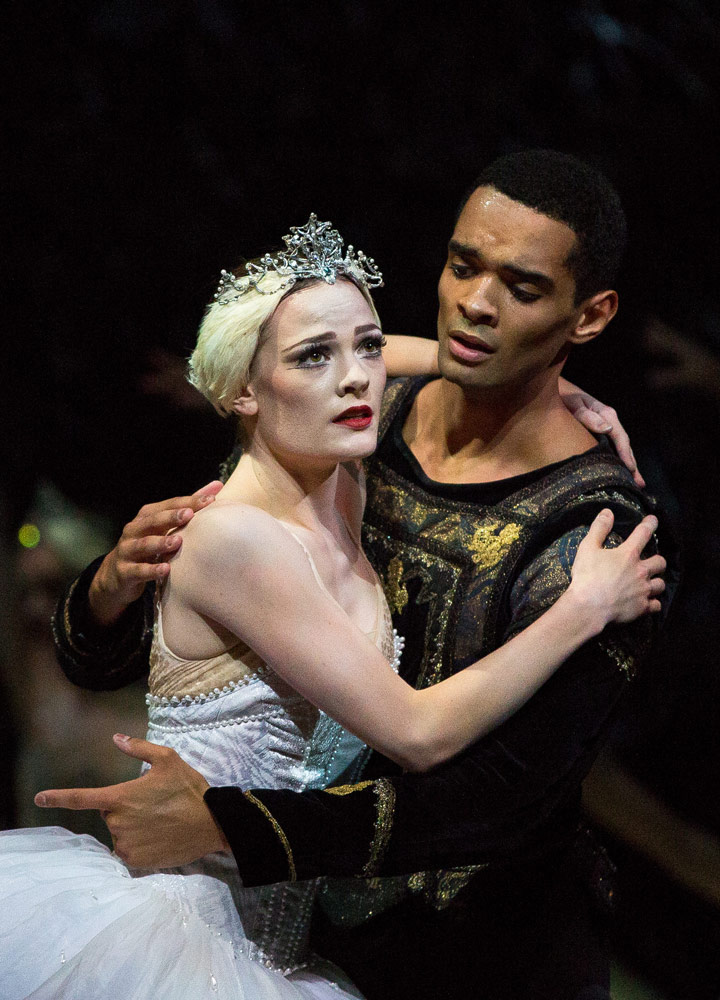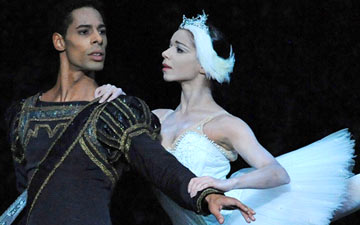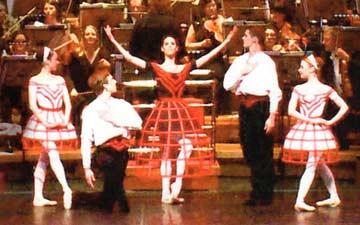
© Roy Smiljanic. (Click image for larger version)
Birmingham Royal Ballet
Swan Lake
London, Sadler’s Wells
13, 14(mat) October 2015
www.brb.org.uk
It’s been a quarter of a century since The Royal Ballet’s sister company, Sadler’s Wells Royal Ballet, bravely upped stakes and set off for a new home in the Midlands where it was renamed The Birmingham Royal Ballet. The company took a great leap of faith because Birmingham was not overflowing with culture at that time. However, with the dedicated efforts of the then director, Peter Wright, followed in 1995 by David Bintley, the company has absolutely flourished offering a great range of works both old and new.
Celebrating its 25th season, the company has returned to its roots at Sadler’s Wells Theatre in Islington bringing two programmes – a full length ballet and a triple bill. And what better way to show off the whole company than Peter Wright’s 1981 staging of the ever popular beloved Russian classic, Swan Lake.

© Bill Cooper. (Click image for larger version)
This production, based on the Petipa-Ivanov original, is filled with dark connotations, from its heavy-laden costumes to the oppressive atmosphere that descends over the court at the death of the King, Siegfried’s father. Even before the main curtain is lifted, we have seen a cortege of mourners following a coffin topped by a gold crown. Then, when the first act begins, instead of the usual bucolic peasants dancing in the grounds of the palace, we are inside the gothic and gloomy baronial hall with its flickering candlelight and mustiness where court lords and ladies in long-sleeved, brocade robes gather to wish the Prince a happy 21st birthday. However, he is not in the mood for jollity, recognising the onerous duties that now await him, plus the demands of his mother that he must choose a bride at the official birthday ball the following evening. Even when his trusty friend Benno brings in two pretty young courtesans to dance with him, he still cannot break out of his depression. His eyes light up only when he is given the gift of a crossbow, but they quickly dull again when his mother shows him portraits of the three princesses, one of whom he must choose for his wife.
Tyrone Singleton as Siegfried ably portrayed the heavy yoke of responsibility that had been laid on the prince’s shoulders. Tall, elegant and dressed in black, he made an impressive figure slumped in his royal chair, giving permission for dancing but not wishing to join in. His brooding and pensive character remained even when he was encouraged to dance, but there was no joy in his movements. However, Singleton did show off his poetic line, his natural ability to jump high into the air and land with cat-like softness, and he let us admire his soaring tours en l’air, which ended in perfect fifth positions, and his arrow-like jetes that encompassed the stage. The solemnity on his face did not truly soften throughout the ballet until the final act when he was full of regret and deeply repentant for breaking his promise to Odette. It was here that his body seemed to relax and emote his desire for forgiveness. Even in the ballroom scene when Odile is seducing him into believing she is his beloved Swan Queen, he remained as though under a spell, his face rarely breaking out of its sternness. His solos again showed technical finesse but the famous pas de deux was without any of the spine-tingling romantic expectancies.

© Roy Smiljanic. (Click image for larger version)
Dancing the demanding dual role of Odette-Odile was Celine Gittens, who hails originally from Jamaica but later trained and danced in Canada. Small-framed and as delicate as swansdown, she flew onto the stage with light, lively leaps that sent Siegfried scampering out of her way. As Odette, she offered beautiful posings, lovely footwork and strong jumps, but she is not a lyrical ballerina – yet. Her movements, while clean and tidy are performed with textbook precision, yet without what the Russians call, ‘soul’.There is not always a feeling that she is dancing from within. Her Black Swan was nimble and strong, and she flashed her eyes at Siegfried, mesmerising him into believing she was Odette, then confidently spun off ‘two single-one double’, on-the-spot neat fouettes.
The final act was my favourite moment. From out of a ground mist, the flock of white swans rise up to await the return of their Queen. Their dancing is full of pathos and dreaded anticipation as Tchaikovsky’s passion-filled score washes over them. Conductor Koen Kessels produced some wonderful playing from the Royal Ballet Sinfonia, and especially from the oboist and harpist who played with clarity the ‘signature’ theme.
There is no jester in this production but Benno, the Prince’s friend is given more to dance. William Bracewell gave a dramatically convincing performance showing good technique and feather-like landings from high jumps. Petite Marion Tait took the role of the Queen Mother, first seen in her mourning robes and looking very much like Queen Victoria. Obviously very fond of her towering son, she shows him who is in charge and who must be obeyed when it comes to regal duties. There are just three princesses – Hungarian, Polish and Spanish – to choose from and, as rivals, their meeting at the ball sparks off some funny facial expressions.
But it is the corps de ballet of swans which can make or break this most popular of ballets, and happily, the 18 BRB dancers did justice to the choreography and the staging. While they could do with some épaulement coaching, they danced with grace and musicality and showed an awareness of uniformity in their straight lines, same-height arms and legs and incline of the heads. There was a powerful moment at the end as they all turned on Von Rothbart and advanced on him like a herd of predatory animals. The audience showed great appreciation for the performance.
But…

© Andrew Ross. (Click image for larger version)
Sixteen hours later, I was back in the stalls to see the Swan Lake matinee with two of the company’s younger dancers – Delia Mathews and Brandon Lawrence. And I have to say that I was mightily impressed by their performances and their interpretation of the roles. They both brought out in their interpretations the love story as well as the tragedy of the ballet. The tall, slim Delia Matthews showed promising technical ability in her solos and while her arms did not ripple as did those of Gittens, she made an elegant and stately swan, and a conniving Odile. Lawrence, a younger version of Singleton, being tall, long-necked and slender with an amazing jump and softness to his dancing, played his Prince with more sensitivity. It was obvious in the first act that he was distressed at the loss of his father and the feared future, but he still found time to smile and accept the greetings of his friends with genuine warmth and compassion. His meeting with Odette saw him soften with immediate attraction and there was plenty of eye contact and his dancing showed his developing feelings of longing. In the third Act, he was visibly ensnared into Odile’s web of deceit and devastated when he finds he has been tricked and broken his promise to his true love. Lawrence not only has excellent technical abilities, he has a real sense of characterisation and he is a dancer to watch in the future.

















You must be logged in to post a comment.